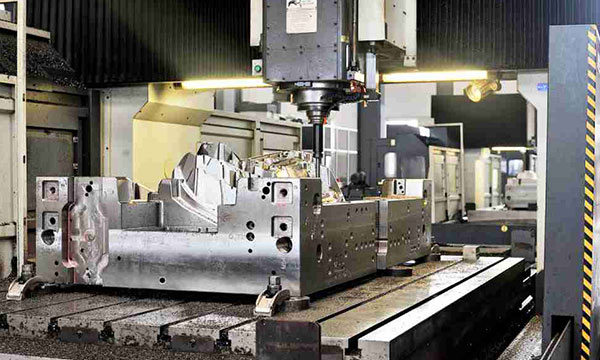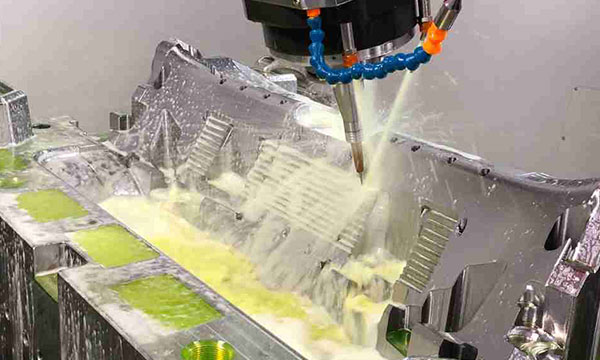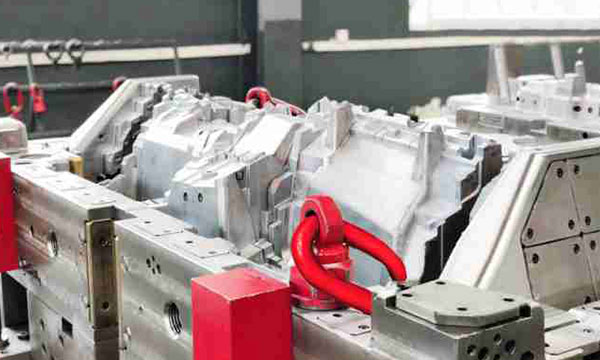咸宁市洪盛模具科技有限公司
Learn the eight content of foreign model work! Avoid machine waste
- Categories:News
- Author:
- Origin:
- Time of issue:2021-07-22 14:16
- Views:0
Learn the eight content of foreign model work! Avoid machine waste
The quality of the mold is directly related to the quality of the product, production efficiency and cost, which I think we will not disagree. The quality of the mold needs to find problems and solve problems through mold testing, so the mold testing process is very important for injection molding enterprises.
On the requirements and information of the trial mold, we are relatively easy to query. So, what content does foreign test model contain?
The following article is to introduce how foreigners try the model, for the content introduced in the article, most of my positive attitude. To be honest, there are some things I don't understand and some things I disagree with. Here I do not express their own opinions, to a thorough "doctrine", the original to introduce it to everyone, everyone can see how others are doing, there are objections to discuss, exchange.
The eight content of foreign model trial work
First, mold empty operation test -- verify the action of the mold
A. Mold opening and closing condition check under low pressure:
1. The mold is divided into fast, medium and slow opening and closing 3 times each, and there is no abnormal sound or blocking phenomenon in the opening and closing process;
2. Mold opening and closing action is smooth, there is no interference.
B, mold ejection system inspection (under low pressure)
1. The ejection action is divided into fast, medium and slow ejection 3 times each to check whether there is any abnormal phenomenon;
2. After the thimble (cylinder) at the plane is pushed out, whether it will be loose or stuck;
3. Inclined thimble or cylinder device, whether to add positioning pins (to prevent loosening or rotation);
4. Whether the ejector system (thimble or ejector block) has abnormal sound and flutter when ejecting
C. Check mold reset
1. The mold is reset 3 times each at fast, medium and slow speeds to see whether it can return to the position (reset);
2. After reset, the end face of the inclined thimble shall not be higher than 0.1mm or flush with the mold core;
3. Reset whether the contact with the limit card is good;
4. Whether the thimble interferes with the action of the row bit when ejecting it (whether the slider returns to the position);
5. Is the mold equipped with a thimble reset device (mechanical)?
D. Check the action of the row bit (slider)
1. Open and close the mold 3 times each according to fast, medium and slow, and observe whether the action of the row position is smooth;
2. Whether the line position is normal and whether it interferes with the thimble;
3. Whether the line positioning is reliable;
4. The sequence of action of the hydraulic core pulling device;
5. Whether the row bit is strained or "stuck" during empty operation.
Second, cavity injection balance test
1. Play 5 molds successively and weigh their weight;
2. Record the individual weight of each product in each mold;
3. Reduce the injection volume, fill 20%, 50%, 90% of the sample 3 molds each;
4. Weigh and record the weight of each of the above products;
5. If the difference between the maximum weight and the minimum weight of the product is less than 2% of the weight is acceptable - if the weight fluctuation error is within 2%, it indicates that the mold cavity is balanced, otherwise it is unbalanced;
6. If it is a single cavity mold, it is also necessary to do the glue balance test (to observe the actual glue situation)
Third, the pressure holding time (gate freezing) time test
1. When the holding time is first set to 1 second, each molding 3 mold products;
2. As shown in the table, increase the pressure holding time and reduce the cooling time successively, so that the entire cycle is unchanged (until the gate is frozen and sealed, and the product weight is not increased);
3. Set a number of different pressure holding times as shown in the following figure, shape 3 mold products each time, weigh the product weight of the specified cavity, and record the data in turn in the table;
4. Determine the best holding time according to the chart.
Fourth, the determination of the best clamping force
1. When the pressure holding switching position/pressure holding pressure is set to the best, the clamping force is set to within 90% of the maximum clamping force, forming 3 molds and recording the weight of each mold product;
2. The clamping force is reduced by 5Ton successively, 3 molds are formed each time, and the weight of each mold is recorded until the weight of the product suddenly increases and the weight increases by about 5% and the edge of the product begins to appear.
Fifth, the best cooling time determination method
1. In the case of suitable injection molding process conditions (after the product is full), estimate the cooling time (primary a long cooling time, so that the product is completely cooled), play 3 molds of the product, and measure its size;
2. Record the product size in the following table and observe the deformation of rubber parts;
3. The cooling time of the product is reduced by 1 second one by one, and 3 molds are played;
4. Reduce the cooling time until the product begins to deform and the size begins to decrease;
5. The injection molded product of each cooling time should be measured after the plastic part is fully cooled (about 15 minutes).
6. The basis for determining the best cooling time - considering the dimensional stability of the product.
General cooling time estimation formula:
1. Experience cooling time ≥t(1+3t)...... Mold temperature below 60℃;
2. Experience cooling time ≥1.5t(1+3t)...... Mold temperature above 60℃;
(t represents the maximum meat thickness of the molded product).
3. Theoretical cooling time estimation formula:
s= Minimum cooling time (s)
t= Thickness of plastic parts (mm)
α= thermal diffusion coefficient of material (c㎡/ second)
Tk= demoulding temperature of plastic parts
Tm= Mold temperature (℃)
Tc= barrel temperature (℃)
6. Test of cooling water flow
1. Use pressure gauge and flow meter to measure, and fill the measured data into the table;
2. Measure and record the diameter of cooling water pipe;
3. Check kinematic viscosity according to cooling water temperature;
4. Calculate its Reynolds number according to the following formula; Reynolds number (Re)=3160× cooling water flow/cooling water diameter × kinematic viscosity
5. Only when the flow of cooling water is in a turbulent state can it have a better cooling effect (Re <2000 is laminar flow state; Re >4000 indicates turbulent flow (turbulent flow). Re=2000~4000 indicates the transition state).
Seven, mold cooling uniformity test
1. Use the mold temperature measuring instrument to measure the temperature of the core and cavity at 10 points each, and record it in the table below;
2. The difference between the actual temperature and the average value of each measuring point should be less than 2℃, if the difference with the average value is more than 2℃, it indicates that the cooling effect of the mold is uneven, and the cooling system should be improved.
8. Viscosity analysis of the solubility-determine the optimal injection speed
1. Record hydraulic oil temperature, solution temperature and mold temperature;
2. First set the end position of the sol, and only use the first grade injection glue;
3. Set the holding pressure and holding time to zero, determine the starting position of the injection, and gradually increase the injection speed;
4. Adjust the injection speed to fill 95% of the rubber parts (observe whether there is padding, leave 5-10mm of padding);
5. Record the maximum injection speed achieved when filling to 95% of the rubber parts;
6. Record the maximum injection speed and peak injection pressure achieved by injection in the "injection speed analysis data table";
7. Gradually reduce the injection speed, increase the injection pressure, observe and record the peak injection pressure when filling to 95% of the rubber parts;
8. Determine the optimal injection speed from the graph.
Copyright © Hongsheng(Xianning)Mold Technology Co.,Ltd. 鄂ICP备16009333号
Copyright © Hongsheng(Xianning)Mold Technology Co.,Ltd.







